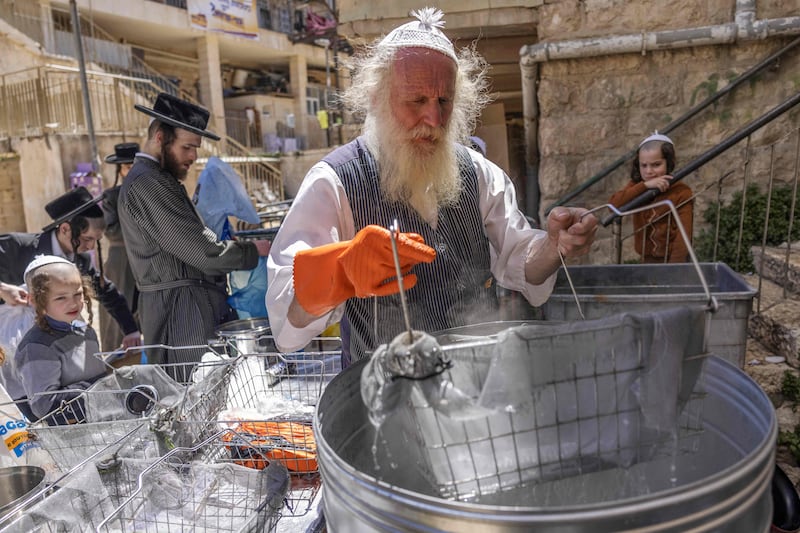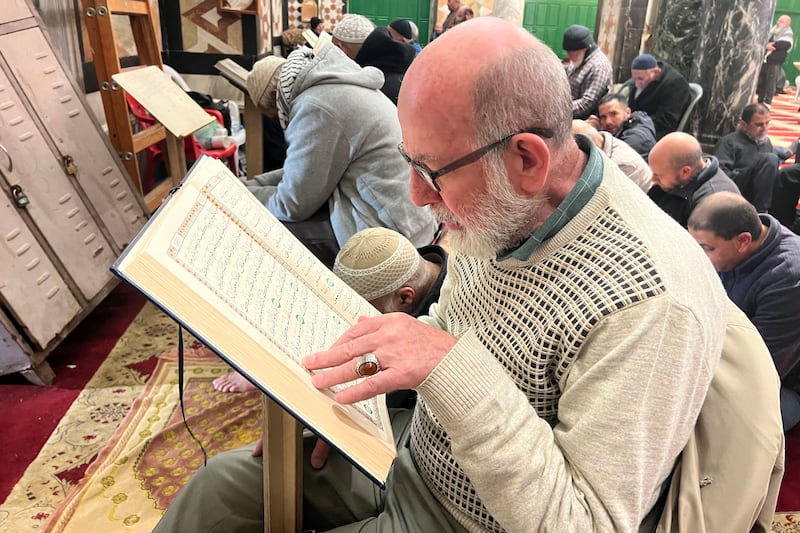The elderly Palestinian man was incensed. In his garden stood a house he had built for his son, now occupied by an American-Jewish family. A court had ruled the house was illegal. The court, he said, had taken control of the house, and it was given to a settler.
The house is in the middle of the Sheikh Jarrah area of East Jerusalem, where Israeli settlers are attempting to supplant the Palestinian population.
The location of the house is in a development which was built for Palestinian refugees after the 1948 war by the United Nations (UN) and Jordan, which ruled the area until the Six-Day War in 1967. Some residents are the original Palestinian families, others Israeli settlers.
While the UN has said that the eviction of Palestinian families and the replacement by Israeli settlers is contrary to international law, it continues. Israeli authorities describe it as a real estate row. All over Sheikh Jarrah are houses flying Israeli flags, where settlers have moved in.
READ MORE
Ironically, the settler argument is based on ownership of land before 1948, similar to that used by Palestinian refugees, who were forcibly moved from what is now Israel at the time of the establishment of the Israeli state. Palestinians in Sheikh Jarrah claim the settlers are replacing them in order to frustrate any argument that East Jerusalem could ever be the capital of a Palestinian state, based on the two-state solution.
Meanwhile, a walk through the Old City is a geographic lesson in communal tensions. Even the souvenir shops sell different items, depending on what quarter you are in, Israeli flags or Palestinian flags, rosaries and icons, kippahs or Keffiyehs. There are even shops selling full Mass vestments in the Christian quarter. Armed police are everywhere. In an unintended typographical irony, the local police station is signposted the Holly Places Police Unit.
Leave the Old City by the New Gate and you walk into Israeli/Palestinian politics. One crosses a major road, between East and West Jerusalem, still the internationally recognised border, and enters Musrara, now populated by Mizrahi Jews who came from North Africa. It was once an area where Christian Palestinians lived. They fled in 1948. If you look carefully, you will see a street sign for Black Panther Way – these Black Panthers are a Jewish political grouping, inspired by their American counterparts, to fight the injustice and discrimination felt by Mizrahi Jews at the hands of the Ashkenazi European elite.

Further along is Mea Shearim, an area of Ultra-Orthodox Jews who live separately from the rest of the population. They wear distinctive clothing, often refusing to pay taxes or do obligatory military service. Around the area are notices instructing outsiders to dress modestly. People who have driven into the area on the sabbath or attempt to take photographs have had stones thrown at them.
One area of East Jerusalem that the settlers have not taken over is the Mount of Olives. At one viewing site overlooking the Jewish cemetery and the Old City, with the gold of the Dome on the Rock glistening in the distance, Christian pilgrim groups sing hymns. It is, of course, the place Christians believe Jesus spent his last days, while Jews believe the Mount is where the resurrection will begin. For both Christians and Muslims, it is revered as the site where Jesus ascended to heaven. It is also the most important Jewish cemetery in Jerusalem where major religious, cultural and political Jews are buried (and incongruously, former British MP Robert Maxwell). It is the combustion centre of the city.
[ Israeli soldiers kill two Palestinian gunmen in West BankOpens in new window ]
The plan is now to turn the Mount into a national park, thereby reducing the Islamic and Christian presence in East Jerusalem. It will also mean the demolition of Palestinian houses near the area.

But now there is a new group that feels alienated from society in Israel. Sitting in the Israel Museum, a well-spoken woman said that she was ashamed of her government and the so-called legal reforms being pushed through by the right-wing Binyamin Netanyahu-led administration. She was retired, of European descent, and part of Israel’s elite that had established and run Israel since before 1948. She proudly said she had taken part in antigovernment demonstrations, probably for the first time.
[ Israel’s Binyamin Netanyahu in U-turn on dismissal of defence ministerOpens in new window ]
[ Netanyahu names British-Israeli sisters killed in occupied West BankOpens in new window ]
Since the mid-1990s, the West Bank settlements have grown exponentially. Bethlehem is cut off with a wall that looks like the old Berlin Wall while settlements have sprouted on what appears to be every hill top in the area. It is as if Israel is supporting a one-state solution, one that will exclude Palestinians or anyone critical the current right-wing regime of Israeli nationalists.















